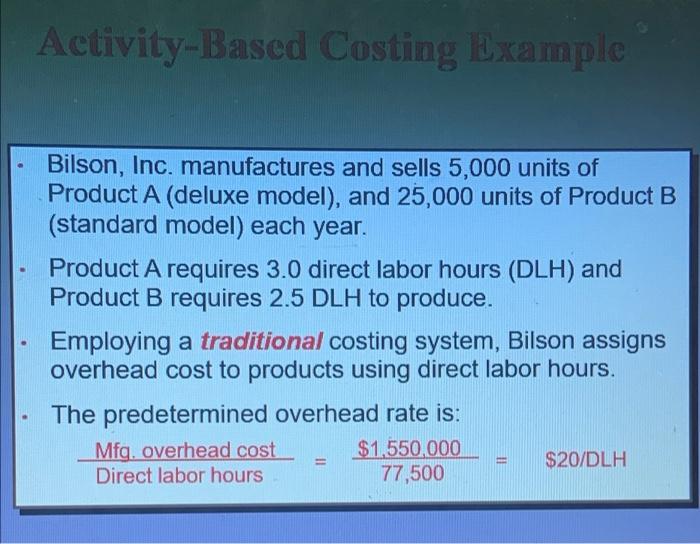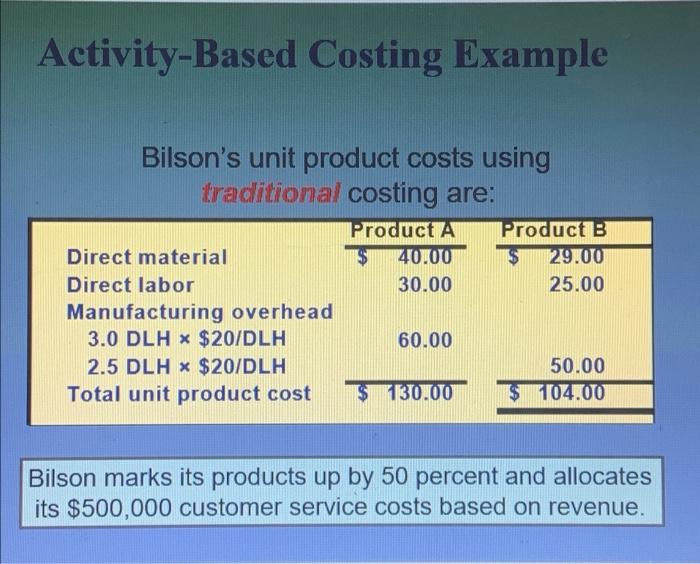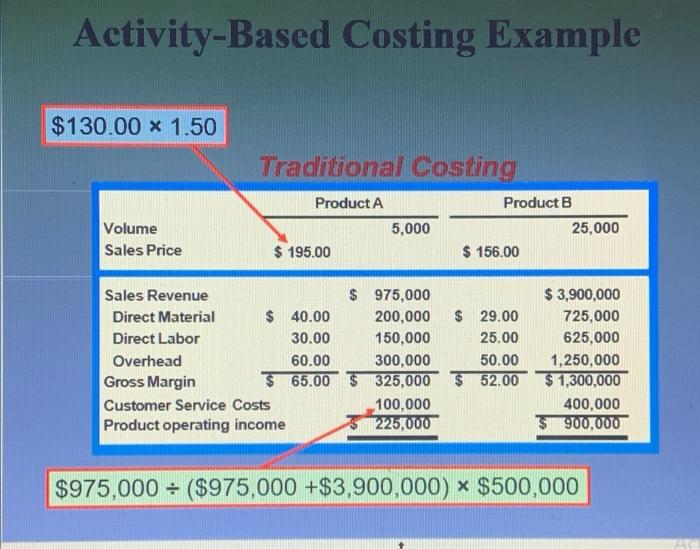Answered step by step
Verified Expert Solution
Question
1 Approved Answer
i dont understand the sales price calculated ie 195 130 * 1.50 = 195 where did 1.50 come from? Activity-Based Costing Example Bilson, Inc. manufactures
i dont understand the sales price calculated ie 195
Activity-Based Costing Example Bilson, Inc. manufactures and sells 5,000 units of Product A (deluxe model), and 25,000 units of Product B (standard model) each year. . Product A requires 3.0 direct labor hours (DLH) and Product B requires 2.5 DLH to produce. . Employing a traditional costing system, Bilson assigns overhead cost to products using direct labor hours. The predetermined overhead rate is: Mfq. overhead cost Direct labor hours = $1,550,000 77,500 = $20/DLH Activity-Based Costing Example Bilson's unit product costs using traditional costing are: Product A Product B Direct material $40.00 $29.00 Direct labor 30.00 25.00 Manufacturing overhead 3.0 DLH x $20/DLH 60.00 2.5 DLH x $20/DLH 50.00 Total unit product cost $ 130.00 $104.00 Bilson marks its products up by 50 percent and allocates its $500,000 customer service costs based on revenue. Activity-Based Costing Example $130.00 x 1.50 Traditional Costing Product A 5,000 25,000 Volume Sales Price $195.00 $ 156.00 Sales Revenue $ 975,000 $ 3,900,000 Direct Material $ 40.00 200,000 $29.00 725,000 Direct Labor 30.00 150,000 25.00 625,000 60.00 300,000 50.00 1,250,000 Overhead Gross Margin $ 65.00 $325,000 $ 52.00 $1,300,000 Customer Service Costs 100,000 400,000 Product operating income 225,000 900,000 $975,000+ ($975,000 +$3,900,000) * $500,000 Product B 130 * 1.50 = 195
where did 1.50 come from? 





Step by Step Solution
There are 3 Steps involved in it
Step: 1

Get Instant Access to Expert-Tailored Solutions
See step-by-step solutions with expert insights and AI powered tools for academic success
Step: 2

Step: 3

Ace Your Homework with AI
Get the answers you need in no time with our AI-driven, step-by-step assistance
Get Started


